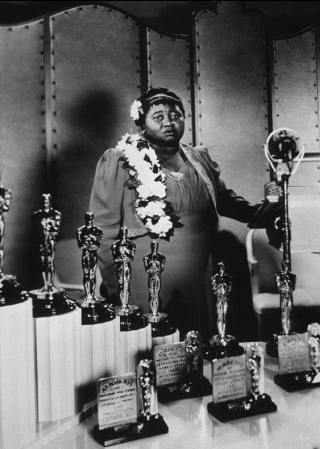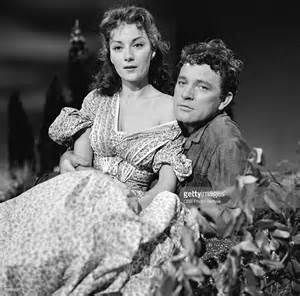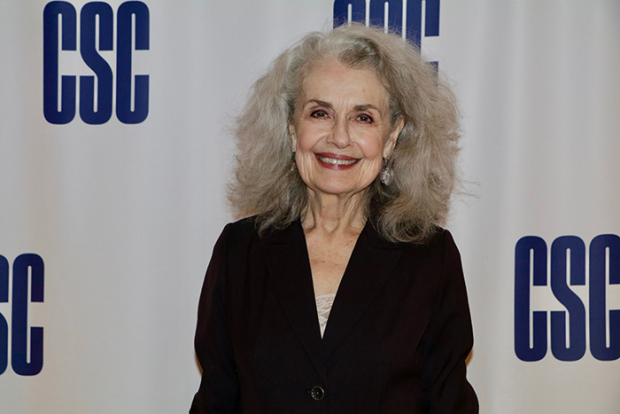An Amusement Column
by Harry Haun
CATHY AND HEATHCLIFF, TOGETHER AGAIN—FINALLY!
Once upon a buffet line, 20 years ago, at the Cannes Film Festival, Rosemary Harris crossed paths with The Paley Center’s archival super-sleuth, Jane Klain, and inquired if she’d come across a kinescope of a live 1958 DuPont Show of the Month television production of Wuthering Heights. Producer David Susskind had invited Harris to be Cathy to Richard Burton’s Heathcliff, and she had to pass because she was already rehearsing another live telecast at the time—but she recommended a RADA pal she thought would be a perfect Cathy, Yvonne Furneaux. A few days before the live telecast, Susskind thought otherwise, fired Furneaux and prevailed on Harris to take over the part with only three or four days rehearsal. She never quite got around to rehearsing Cathy’s deadbed scene and had to consult a script concealed under her pillow for her next line. It being a live production and never repeated, Harris trolled the archives to see what all that must have looked like. Klain couldn’t help.
Once upon another buffet line, last June, at the Theater World Awards, they met again, and Harris re-placed her order. Inspired by the actress’ tenacity, Klain renewed her quest and, before month’s end, located the only complete kinescope of the show in a separate, fairly recent collection at the Library of Congress. The Paley Center now has a copy available for viewing onsite in both its New York and Los Angeles offices.
More immediately—like Friday, Dec. 6, at 8 p.m. (EST) and for this one time only–Turner Classic Movies will air the surviving kinescope edition of Wuthering Heights. It will be the first time in 61 years that it will be seen by anybody—save for Klain, Harris and Michael Schulman, who interviewed the actress about this startling find for an article in the New Yorker online.
Burton and Harris got Grade-A production values from Susskind and first-class support from John Colicos, Cathleen Nesbitt, Barry Jones, Robert Flemyng, Denholm Elliott, Angela Thornton and Patty Duke.
FILM FORUM FOLLIES


“Gone With the Wind‘s” Hattie McDaniel: the first African-American to win–and attend–the Academy Awards
Just when you thought old movies couldn’t be sliced and diced any other way, along comes Film Forum’s kingpin programmer, Bruce Goldstein, to prove you wrong. The 65 films he is stretching at the theater from Carmen Jones on Jan. 17 to Georgia, Georgia on Feb. 13 gives “Black Women—Trailblazing African-American Actresses & Images 1920-2001” their own overdue due. Dorothy Dandridge dominates the series with five entries, followed by three each for Lena Horne, Diana Sands, Rosalind Cash, Pearl Bailey, Pam Grier, Ethel Waters and Josephine Baker, two for Ruby Dee, Whoopi Goldberg (including her 1990 Oscar work in Ghost), Diana Ross and Alfre Woodard and one for the first and third black actress to be Oscared—Hattie McDaniel in Gone With the Wind (1939) and Halle Berry in Monster’s Ball (2001).
Music historian Will Friedwald will weigh in twice in this series, offering special footage and observations on Ella Fitzgerald (Jan. 27) and Billie Holiday (Feb. 9-10).
GWTW, which has taken quite a drumming from the PC crowd in recent years, gets a single showing in the program (at 5:40 on Jan. 26). McDaniel “happened to be” in Atlanta Dec. 15, when the picture premiered but was talked out of participating in the festivities. A month later, when she became the first African-American to contend for the Oscar, she was invited to the Academy clambake and given a nice little table at the back, near the kitchen, which made her long trek to the award podium sweet revenge indeed. She arrived in a torrent of tears–so much so that her more composed thank-yous were refilmed the next day for posterity.
Since 2001, twice as many African-American actresses have taken home Oscars, all in supporting categories, starting with Jennifer Hudson in 2006’s Dreamgirls (which rates a space in the retrospective). The other five: Mo’Nique in Precious, Octavia Spencer in The Help, Lupita Nyong’o in 12 Years a Slave, Viola Davis in Fences and Regina King in If Beale Street Could Talk–but that, as they say, is another series.
The last place you’d expect to find an error would be on the Film Forum marquee, but one just occurred when it declared “Orson Welles’ The Third Man” was now showing. The mistake, while understandable and even calculated, was the misplaced apostrophe.
Granted, the world of today knows little of the genius of Carol Reed, who directed The Third Man, which earned him, after Odd Man Out and The Fallen Idol, the first three BAFTA Awards to be passed out for Best British Film. It also got him nominated for the American Oscar, which would come his way 20 years later for Olivier!
Reed’s two inspired hires for The Third Man: Robert Krasker’s oblique-angled views of a World War II-ruined Vienna and Anton Karas’ haunting, melancholy, all-zither score. Both are one-of-a-kind classics.
In a turbulent attempt at international co-producing, Hollywood’s David O.Selznick wanted Noel Coward for Harry Lime, and London’s Alexander Korda wanted Oscar Welles. Korda won, sorta.
When first pitched the part, Welles replied, “I don’t work sewers,” referring to the film’s protracted underground shootout—and he didn’t. While the sequence was being shot, Welles hopped, skipped and hid all over Europe, causing numerous body doubles to be pressed into service in his absence. (Welles’ close-ups were lensed later in a sweet-smelling London studio.) When he did arrive, he found time to rewrite his ferris-wheel scene with Joseph Cotten (including the memorable “cuckoo clock” spiel) and get in a full week of filming which came out to about five minutes of screen time.
Despite all this, it is considered Welles’ second greatest role, and, once it was sufficiently sanitized, he reprised it in a radio series.
The Third Man was voted the best British film ever made by 1,000 industry professionals, academics and critics in a British Film Institute poll conducted in 1999. Director Roman Polanski and Breaking Bad creator Vince Gilligan both called it their favorite film, and it was the movie Roger Ebert always said he would take with him to a desert island. When Martin Scorsese was in film school, he was moved to write a thesis on the film and got a B+ for his efforts. “Forget it,” he tutor advised. “It’s just a thriller.
STAND UP AND BE COUNTED
Ed Dixon, the actor, singer, dancer, playwright and music teacher, will shuck all those hats and turn storyteller for the nightclub act he’s premiering Friday, Dec. 12, at 7 at The Green Room. Ed Dixon’s Show Stories reviews the theatrical life he has led, with special emphasis on the funny.
“It’s the closest thing to standup that I’ve ever done,” he admits. “I will sing a little bit–y’know, a snippet of this and a snippet of that–but mostly it’ll be anecdotes. There’s no staging. I just walk up to a mic and tell stories that audiences should find amusing and enlightening.”
He has reason to think that. “I’ll tell you what inspired this: A good eight months ago, Feinstein’s/54 Below asked performers who’d opened shows at The 46th Street Theater (now The Richard Rodgers) to tell what it was like. Well, I’d opened No, No, Nanette there in 1971 with Ruby Keeler and Busby Berkeley and Patsy Kelly, and opening night was an unbelievable saga. so I thought I’d tell that. What I didn’t know, and couldn’t have known, was how well young people in the audience would take it. That’s a whole other generation–and they went crazy over it! I thought, ‘Oh, my gosh, this old historical info is really worth something!'”
A few punches are pulled, but, for the most part, Dixon calls ’em the way he sees ’em. “There are two people that I’m pretty hard on. I don’t know if that’s unwise, but I just decided to tell the truth of my experiences with them. I told some stories about an actress who behaved very badly, and then I thought, ‘Y’know, she’s still acting, and I don’t need to do it.’ It was the truth, and the stories were amazing and way out-of-line, but I can’t do that if they’re active.”
Mirth aside, Dixon can be a mesmerizing and emotionally involving tail-spinner, as witnessed by Georgie, a darker and more dramatic solo show detailing his complicated and ultimately tragic relationship with the beloved British actor, George Rose. It won him a Drama Desk Award and an Other Critics Circle nomination in 2017.
Lorna Dallas played her second New York gig in 20 years Tuesday night at The Birdland Theater, and a solid line of chanteuses and knowing showbiz veterans clustered around this rare treat, people like Penny Fuller, Linda Purl, Anita Gillette, Jamie DeRoy, Sara Zahn, Steve Ross, Edward Hibbert, composer-conductor Ron Abel and entertainment lawyer Mark Sendroff.. . .
Her act, called Stages, directed by Barry Kleinbort and musically directed by Christopher Denny, is the story of her life so far, shoehorned into some seldom-heard show tunes: “I Wish It So” from, Juno, “All I Need (Is One Good Break)” from Flora, the Red Menace, “My Dearest Dear” from The Dancing Years, “Empty” from Minnie’s Boys, etc. Bookending all the songs are a mash-up of Sondheim and Berlin (“Glamorous Life” / “There’s No Business Like Show Business”) and “If All the World’s a Stage” from the less-than-legendary Can Heironymus Merkin Ever Forget Mercy Humpee and Find True Happiness? . . .
In between, you discover Lorna’s the lady who said no to Broadway twice. While still in high school in Illinois, she won a national Coca-Cola singing contest, got flown to New York and was offered a Main Stem contract. Being 17, she opted for college. The second time she was asked was by The King of Siam. Yul Brynner needed a Miss Anna for his revival of The King and I. This time she opted for true love, the late Garry Brown, a key figure in the international entertainment scene. He was based in London, and she’s lived there ever since. It was a great break for Mary Beth Peil. . . .
La Peil still has her Miss Anna grace and dignity, and that ain’t easy these days playing one of the career-advising witches in Macbeth, currently at Classic Stage Company with Mr. and Mrs. Corey Stoll.






















